# Asteroid Bennu Sample Reveals Water and Carbon: A New Era in Space Exploration
Written on
Chapter 1: NASA's Groundbreaking Discovery
On Wednesday, a significant advancement in planetary science was announced as NASA presented its inaugural asteroid sample from the near-Earth asteroid Bennu. Collected by the OSIRIS-REx spacecraft, which was launched in 2016, the sample analysis revealed the presence of carbon, water, and sulfur—crucial components for life on our planet.
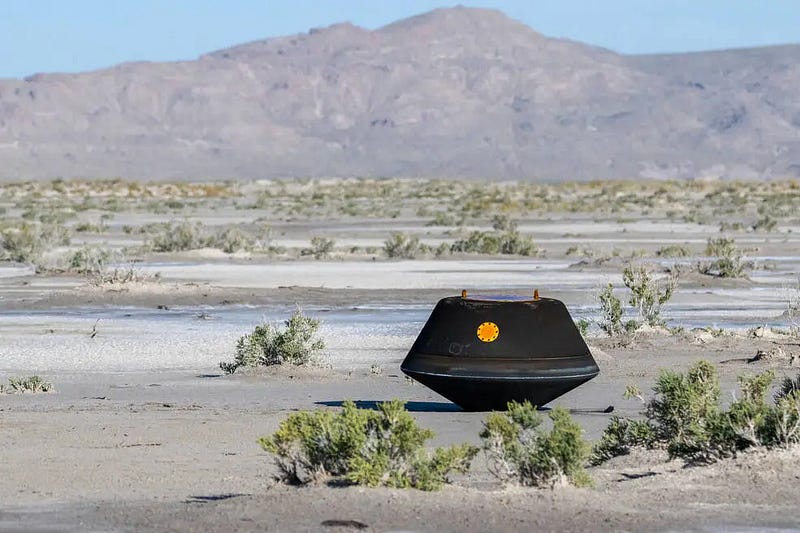
The sample return capsule, which successfully landed in the Utah desert on September 24, 2023. Credit: NASA/Keegan Barber.
Mission Timeline
The OSIRIS-REx mission began with its launch in September 2016, followed by an arrival at Bennu in December 2018 after performing a flyby of Earth for additional momentum. This flyby was crucial as it allowed the spacecraft to conserve fuel. Upon reaching Bennu, OSIRIS-REx commenced a detailed survey of the asteroid while orbiting at an unprecedented distance of just one mile from its surface—the closest any spacecraft has orbited an object of this size.
Following extensive observations, the spacecraft executed a "touch-and-go" maneuver in October 2020, dipping its collection chamber to gather the sample in a brief six seconds. Researchers realized they had likely exceeded their target collection amount when they noticed particles escaping from the canister just before it was secured. After successfully collecting the sample, the probe completed its final flyover of Bennu in April 2021 and began its return journey to Earth. In September, OSIRIS-REx released the sample capsule and set its sights on a new mission: investigating another near-Earth asteroid called Apophis.
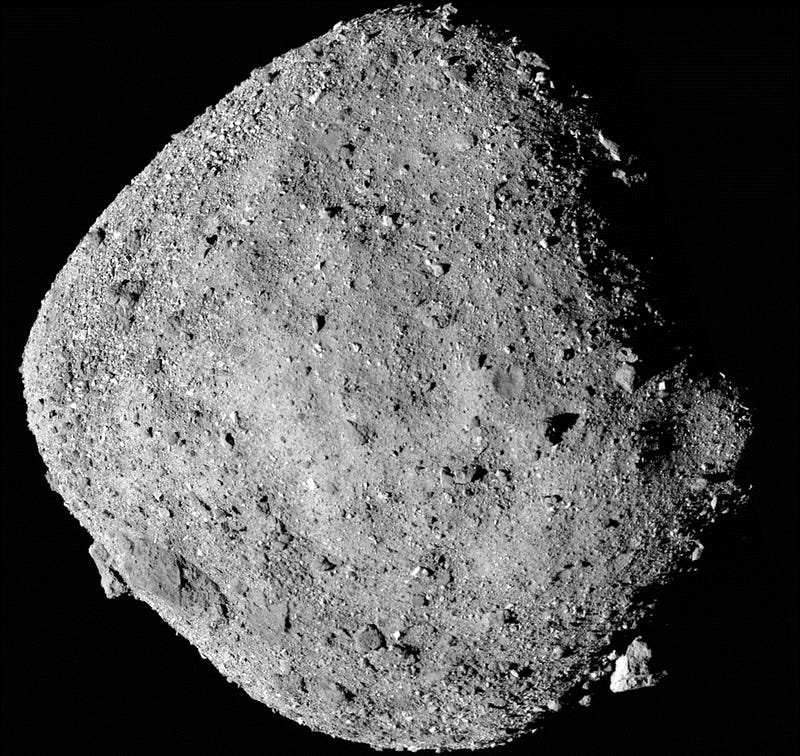
Why Bennu?
NASA selected Bennu for two main reasons: to gain insights into Earth's formation during the early solar system and to explore potential strategies for protecting our planet from near-Earth asteroid impacts. Its proximity to Earth made Bennu an accessible target for study, while its ancient and well-preserved surface provides valuable information about the conditions of the early solar system. Notably, researchers hope this sample could elucidate how life-essential materials were delivered to Earth during its formation.
“This sample return is proof, again, that NASA does do things that inspire us and unite us. NASA brings us together as a community.” — NASA Administrator Bill Nelson
Preliminary Findings
During the sample unveiling, NASA shared preliminary results indicating a rich concentration of carbon and water in the Bennu material. This discovery holds promise for addressing fundamental questions regarding Earth's formation. According to Bill Nelson, “The OSIRIS-REx sample is the largest carbon-rich asteroid sample ever delivered to Earth and will help scientists investigate the origins of life on our own planet for generations to come.”
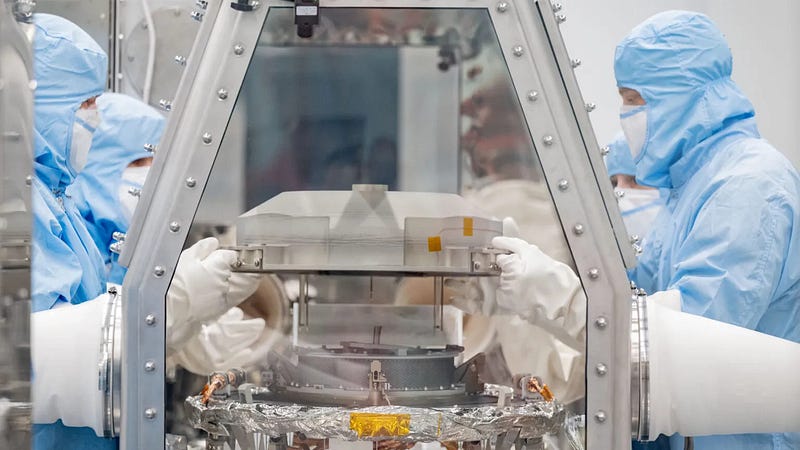
The sample will undergo analysis in a specially designed clean room to prevent contamination, ensuring that all findings are authentic to the specimen itself. “This thing’s loaded with organics…this is incredible material.” — Daniel Glavin, astrobiologist at NASA’s Goddard Space Flight Center.
Initial studies revealed the presence of water-bearing clay fibers, sulfate mineral plates, and carbon, which are all fundamental components of life on Earth. The composition of the sample shows a remarkable 4.7% carbon content, the highest recorded in any extraterrestrial sample to date. Additionally, organic materials typically associated with life on Earth were also identified.
Where Will the Sample Go?
The success of the sample collection is estimated to be around 250 grams, far surpassing the initial goal of 60 grams. This abundance will allow numerous researchers to access the samples for their own investigations. Plans are already in motion to distribute portions of the samples to global partners, and NASA is set to open research proposals in six months to encourage scientists to study the material.
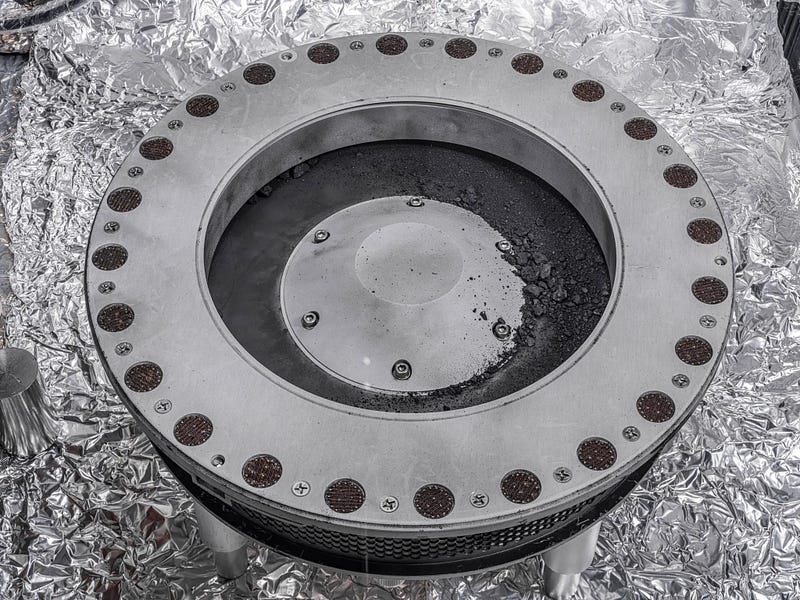
“Scientists that aren’t even born yet are gonna have the opportunity to answer questions about our universe with these samples using technology that has not even been invented.” — Dr. Francis McCovin, Asteroid Materials Leader.
NASA also plans to reserve parts of the sample for future generations to analyze. Similar to the preserved Moon samples brought back by Apollo missions, these materials will be safeguarded for further study as new technologies emerge. Institutions like the Smithsonian, Space Center Houston, and the University of Arizona's Alfie Norville Gem & Mineral Museum are set to receive their own samples of Bennu for public exhibition.
The Smithsonian will acquire two samples, with one designated for its ‘Our Unique Planet’ research initiative, which aims to answer pivotal questions about life's origins, oceans, and continents. The second sample will be displayed in the Hall of Geology, Gems, and Minerals, becoming the first to be accessible to the public. An unveiling date is pending, but it is expected to be available this fall. The University of Arizona anticipates showcasing its sample in November.
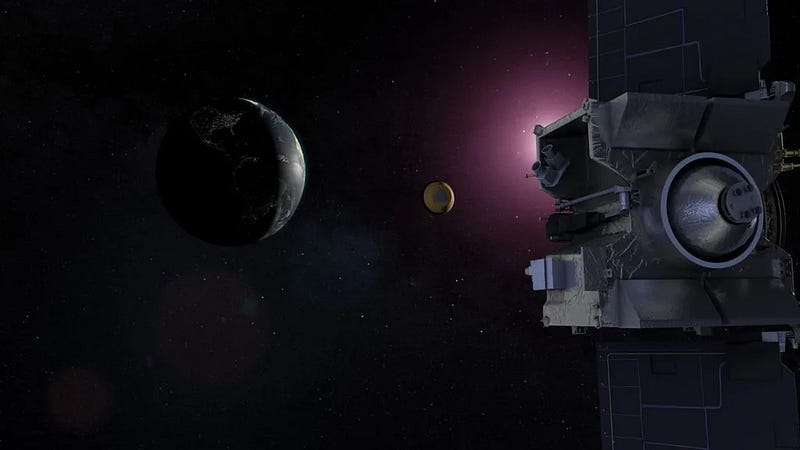
What’s Next?
Having delivered the Bennu sample capsule, OSIRIS-REx is now en route to explore Apophis, another near-Earth asteroid. This asteroid is projected to come within 20,000 feet of Earth in 2029, a close encounter by astronomical standards. The mission will investigate how Apophis's proximity to Earth affects its physical characteristics, including its spin rate and orbit. This research is vital for NASA's ongoing efforts to monitor asteroids that may pose a risk to our planet.
If conditions permit, NASA plans to launch its next asteroid mission today at 10:19 a.m. EDT. This mission will target Psyche, a metal-rich asteroid situated in the belt between Mars and Jupiter. Due to its metallic composition, researchers aim to glean insights into the formation of rocky planets within our solar system. According to Henry Stone, Psyche’s project manager at NASA’s Jet Propulsion Laboratory, “the team has worked tirelessly to prepare the spacecraft for its journey to a one-of-a-kind asteroid.”
The first video titled "NASA's Bennu asteroid sample contains carbon, water | WION Fineprint" offers insights into the implications of the findings from the Bennu sample collection.
The second video, "Asteroid Bennu samples revealed! 'Contain abundant water,' says NASA Chief," discusses the significance of the water content found in the Bennu samples and what it means for future research.